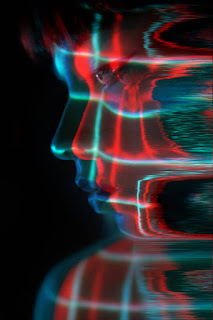Dissolving the Illusion: Ego and Identity in Turiya
In the elusive Turiya state of consciousness, the usual boundaries of ego and identity fall away, revealing a profound non-dual awareness beyond the familiar realms of waking, dreaming, and deep sleep. Turiya meaning “the Fourth” is often described as a state of pure consciousness untouched by the fluctuations of thought, where one awakens to a sense of unity with all that exists. This transcendent state, celebrated in many non-dual philosophies, challenges our conventional understanding of self by exposing the illusory nature of the ego. What remains is an awareness so expansive and serene that it has been likened to a “silent witness” or a moon hovering calmly over turbulent tides a serene moon watching the waves of existence. Often equated with profound spiritual awakening, experiencing Turiya dissolves the illusion of separateness and reveals an identity that is far greater than the individual self.
Understanding Turiya: The Fourth State of Consciousness
Turiya is defined in ancient wisdom traditions as the fourth state of consciousness beyond waking, dream, and deep sleep. While the waking state is filled with sensory perceptions and the dream state with fanciful images, Turiya is the background of pure awareness that underlies and transcends all three ordinary states. The Mandukya Upanishad – a classical Vedic text – poetically describes Turiya as “unperceived, unrelated, incomprehensible, unthinkable, indescribable… the cessation of all phenomena; it is non-dualpeace-bliss. This is the Fourth (Turiya). This is the Self to be realized.”. In other words, Turiya is not just another experience but the very essence of consciousness itself – the unchanging witness to all experiences.
From a philosophical perspective, Turiya represents the realization of the true Self (Atman) and its unity with universal consciousness (Brahman). In this state, the observer and the observed are one; the dualistic gap between “self” and “other” collapses. Mystics often emphasize that Turiya is always present – it is our ever-present ground of being – but it’s usually obscured by the clouds of mental activity and ego-identification. In Turiya, one becomes aware of that unchanging awareness which silently witnesses the coming and going of thoughts, sensations, and even deep sleep, without itself being affected. This pure consciousness is characterized by an experience of timelessness, peace, and blissful tranquility. It is as though one has “woken up” from the limited personal perspective into a vast, all-encompassing awareness that simply is.
Ego and Identity: The Illusion of Separateness
Our normal experience of life is dominated by the ego the sense of being a separate “I” with a personal history and identity. According to non-dual teachings, this ego-based identity is ultimately an illusion, a temporary role we play in the waking and dream states. Just as a dream character has no reality when one wakes up, the individual self is discovered to be insubstantial when viewed from the perspective of Turiya. Traditions like Advaita Vedanta and Buddhism liken the ego to a dream or a mirage, arising from ignorance of our real nature. In Vedanta’s classic metaphor, we are like someone who mistakes a rope for a snake in dim light, the snake of the ego frightens us, but upon closer insight we realize it was only a rope all along. The ego, with its stories and labels, is superimposed upon the one real Self; when true knowledge dawns, the illusion vanishes much as the imaginary snake disappears when the rope is recognized.
In the Turiya state, this illusion of separateness is fundamentally shattered. Ego dissolution in Turiya means that the usual mental chatter saying “I am this, I am that” falls silent. One experiences a liberating sense that the individual self was never an independent entity at all, but rather a construct of the mind. Personal identity melts into an expansive sense of being, much like a wave realizing it is nothing but the ocean. Indeed, the boundaries of the ego and personal identity dissolve in Turiya, revealing the Self as one with an infinite, undivided. This is a direct realization that what we took ourselves to be – our name, our story, our body-mind, is not the ultimate truth of who we are. The true “I” is found to be the universal “I AM,” an awareness that permeates everything. As the Upanishads proclaim, “That thou art”, indicating that our true identity is the very ground of the universe.
To illustrate this ego dissolution, consider a famous insight from the Sufi poet Rumi: “You are not a drop in the ocean. You are the entire ocean in a drop.”. This metaphor beautifully captures the shift in identity that occurs. We typically think we are just a “drop” a tiny, separate person, but in the awakened state we realize we encompass the whole ocean of existence within us. The individual self is one with the Whole, and this realization dispels the illusionof ever having been a separate drop. Such ego-transcending insight is often accompanied by feelings of profound compassion, connectedness, and freedom. The fear, selfishness, and isolation born of the ego begin to fall away, since one no longer perceives a hard boundary between “me” and “not me.” Instead, there is just the one life, one consciousnessplaying as the many.
Turiya and Non-Dual Consciousness Across Traditions
The experience of Turiya is not confined to a single religious or philosophical tradition. It finds echoes in non-dual consciousness teachings around the world. In the Hindu Advaita Vedanta tradition, Turiya is explicitly the goal, the recognition of the Self’s oneness with Brahman, attained by piercing the veil of Maya (illusion). Buddhist philosophy similarly speaks of awakening from the illusion of self: Buddhism emphasizes the impermanence of all phenomena and the illusory nature of the personal self. The realization of Turiya closely parallels the Buddhist understanding of enlightenment, where one attains a state of awareness free of dualistic thinking and free of clinging to any fixed. In essence, both Vedanta and Buddhism point to a liberation that comes from seeing through the false separations created by the mind.
Turiya’s hallmark of pure, contentless awareness is also mirrored in Zen and Dzogchen teachings. Zen Buddhism, for instance, encourages seekers to discover the state of “no-mind” (Chinese: wu-nien) a clarity of awareness empty of concepts. This Zen insight aligns closely with Turiya, describing a pure presence free from conceptual elaboration. Likewise, in Tibetan Dzogchen (a non-dual tradition of Vajrayana Buddhism), the natural state of mind known as Rigpa is understood as a “pristine awareness” beyond all mental grasping, an awareness as open and vast as the sky. Practitioners of Dzogchen aim to recognize Rigpa, which is remarkably similar to recognizing Turiya: in both cases, one rests in the ground of consciousness itself, untouched by the passing contents of experience.
What is striking is that sages from different cultures use different languages but point to the same inexpressible reality. Whether it is called Turiya, Nirvana, Pure Consciousness, or the Natural Mind, the message is that there is a foundational state of awareness where duality disappears. In this non-dual consciousness, there is no separate subject and object, no self and other only an indivisible presence. All the great non-dual philosophies stress that realizing this truth is the key to liberation from suffering (termed moksha in Vedanta or nirvana in Buddhism). They also agree that this realization is not merely an intellectual idea but a transformative shift in being and seeing. When the veil of illusion is lifted, one’s perception of reality changes fundamentally, revealing the inherent unity of existence that was always there.
Metaphors and Insights into Ego Dissolution in Turiya
Because Turiya is a state beyond ordinary experience, teachers often resort to metaphors and poetic language to convey its flavor. One vivid metaphor compares Turiya to a quiet, full moon watching over the turbulent ocean of life. The moon’s cool light is unchanged by the waves below; likewise, Turiya is the serene witness, untouched by the ups and downs of worldly events or personal emotions. The turbulent tides – our thoughts, fears, and desires – may continue to rise and fall, but in Turiya one identifies with the calm moonlight rather than the stormy water. This captures the peaceful detachment and clarity of the Turiya state, where one observes all phenomena with equanimity and compassion, unentangled in their drama.
Another common analogy is that of space: our true consciousness is like the open sky or space itself – formless, boundless, and allowing all things to exist within it. Clouds may pass through the sky, but they do not stain or limit the sky. Similarly, thoughts and ego-identities pass through the space of awareness, but in Turiya one realizes that this awareness itself is limitless and unstained by any particular content. The mirror is another classic image used especially in Buddhist Dzogchen teachings: the mind’s true nature is like a crystal-clear mirror that reflects all images yet remains unaffected by them. When abiding in Turiya, one’s awareness reflects the world without distortion or attachment, just like a mirror impartially reflecting whatever appears. These metaphors underscore that our real Self is not a thing or object – it is the formless knower, the empty yet full awareness in which the panorama of life is displayed.
Scriptural insights also illuminate the dissolution of ego and emergence of the true Self. The ancient sages of the Upanishads taught neti neti, “not this, not that,” to peel away all false identifications. By negating everything we typically call “me” body, mind, thoughts, roles, one eventually arrives at the pure Self, which is beyond description yet palpably real. As one Upanishad verse puts it, “The partless OM is Turiya, the fourth. Soundless, fearless, unutterable – a quieting down of all relative manifestations, blissful, peaceful, non-dual.”. This evocative description highlights that in Turiya, all relative identities and phenomena fall silent. What remains is a fearless, blissful peace, the one “partless” reality in which all the diverse parts of experience finally subside. Such scriptural affirmations reassure the seeker that the loss of the little ego is not a loss at all, but rather the uncovering of an immeasurable wholeness.
Conclusion: The Self Beyond the Self
Experiencing Turiya is often described as dissolving a grand illusion – the illusion that our ego and personal story define who we are. When the ego-illusion dissolves, we awaken as if from a dream to recognize our identity as pure consciousness itself. This transformative realization upends our conventional notions of life and self. The “I” is no longer confined to a single body or mind, but is understood as the eternal Atman-Brahman, the Self of all. In practical terms, this shift can foster profound positive changes: without the ego’s constant fears and desires, one naturally abides in greater compassion, contentment, and freedom. Life is approached as a unified whole rather than a battlefield of competing selves.
Crucially, dissolving the illusion of ego does not mean becoming a passive void or losing functionality in the world. On the contrary, one who abides in the awareness of Turiya can engage life with greater clarity and love, because they perceive all beings as reflections of the one Self. The sages say that when the ego is seen as unreal, what shines forth is our true identity – an identity not of a persona, but of pure Being. This awakening has been the aim of spiritual seekersacross ages, whether framed as enlightenment, liberation, or union with the divine. Through meditation, self-inquiry, and grace, many have tasted glimpses of this fourth state and found it to be the answer to the deepest longing of the heart.
In summary, Turiya dissolves the illusion of individual ego and reveals the radiant truth of non-dual consciousness. It shows us that our identity and ego were like transient waves on the ocean of an infinite Self. When this truth is realized, the seeker and the sought become one and the same. The journey to Turiya – to “wake up” from the dream of separateness – is both a philosophical adventure and a deeply personal transformation. It blends the poetic and the analytical, inviting us to question who we really are and to directly experience the answer. Ultimately, the dissolution of the ego in Turiya is not a loss of self at all, but a homecoming: a return to the boundless identity that was always quietly present, awaiting our recognition. In that recognition lies the end of the illusion and the beginning of true self-realization – the knowledge of the one Self in all beings, shining as pure, peaceful awareness.




![Top Classes in Mindfulness Online – Updated [May 2024]](https://harmonycentered.com/wp-content/uploads/2024/05/IMG_2574-1.jpeg)

